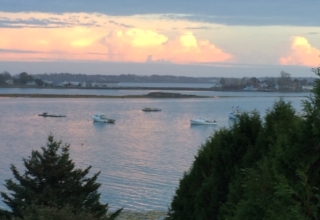
Third, sanctuary enables us to find our deep center and reorient to our own deeper compass again. At the heart of sanctuary for many people is the sense of a place, time or situation where the conditions of ordinary living are suspended for a time. This makes sanctuary different from all other parts of life in time, space, and situation. In these suspended moments, the demands of ordinary life are set aside as are the rules of ordinary life. The heavy weight of blame, guilt, danger, limitations, and sanctions is lifted. Several uplifting forces are added, including (certain kinds of) freedom, openness, possibility, empowerment.
In sanctuary there is the real possibility for renewal and healing at a deep level: nurturance, body, mind, interpersonal, spiritual, situational. There is a real possibility for introspection: seeing oneself as one is (introspection); seeing a situation as it is (extrospection); seeing others as they are, and so forth. There is a real possibility for creative new thinking, being open to new possibilities, being able to envision oneself in new possibilities. There is a possibility of some kind of coming home to one’s own truth. There can be a kind of coming to oneself.
Finally, sanctuary enables us to grow by engaging and encountering something inner or other, and then return. There is a close relationship between sanctuary and learning. We have identified sanctuary as refuge, yet sanctuary can also mean challenge and learning. Learning occurs both within the context of what is to be learned, and apart from it. One has to have direct experience, but also reflection from a place of disengagement. The place of disengagement is a temporary sanctuary.
There is a key insight to be offered at this point. We are most likely to be aligned with and benefit from the opportunities offered in a sanctuary when challenge and support are balanced. As Nevitt Sanford (1966) suggested many years ago, we learn and thrive in settings that allow not only for the presence of difficult issues but also for resources that are adequate to resolve these issues. According to Csikszentmihalyi (1990) work and life in an organization or community can often be either quite boring or profoundly anxiety provoking. It is in the threshold between boredom and anxiety that we find rich occasions for personal and collective learning.
It seems that deep, significant personal and collective learning, in particular, involves a balance between support and challenge. Challenge occurs in the process of engaging an issue. Support often means the provision of physical, emotional, social, or intellectual resources. Challenge is added in small manageable increments at a speed with which the learner is able to cope. The learning environment can be engaged in a full-blown sanctuary, or it can be created in a mini-sanctuary in which the full demands of the new learning are not yet applied.
Most importantly, sanctuary is a place where failure can occur—and where learning from this failure can also take place. Sanctuary provides safety. It allows important learning to enter. Publicly identified sanctuaries—places and times labeled as sanctuaries—provide the circumstances in which certain kinds of deeper learning, healing, integrating, meaning-making, and self-communication can take place. One could argue that all learning takes places in some sort of sanctuary-based setting, and that the most important integrative and developmental learning we do as adults occurs both in settings that are embedded in our immediate world) and in sanctuary settings (away from this world).
Download Article














